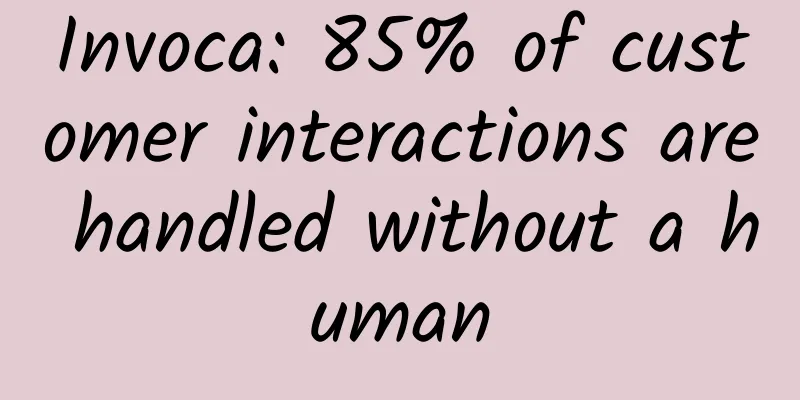Invoca: 85% of customer interactions are handled without a human

|
Brands are betting on AI and digital communications to enhance their customer experience, with 85% of customer interactions being handled without a human operator. According to an online survey of more than 2,000 U.S. adults commissioned by Invoca and conducted by Harris Poll, consumers do not seem to be fully comfortable interacting with brands only through digital touchpoints. The survey found that more than half of consumers (52%) feel frustrated when a company only has automated communications, and nearly one in five (18%) feel angry, while only 16% say they enjoy interacting with such brands. From an industry perspective: nearly half of consumers (49%) trust AI-generated retail recommendations, 38% trust AI-generated hotel recommendations, only 20% trust AI-generated medical recommendations, and 19% trust financial services recommendations. From a generational perspective, younger consumers are more likely to trust AI-generated advice (80% of 18-34-year-olds vs. 62% of those 35+), especially in financial services and healthcare. 22% of 18-34-year-olds trust AI-generated advice in healthcare and finance, compared to just 10% of those 65+. The ability to solve a problem, build trust, or complete a purchase is critical. In healthcare, for example, 32% of consumers complete transactions over the phone, 30% prefer face-to-face transactions, 25% prefer online transactions, 6% complete transactions through a brand’s mobile app, and 5% complete transactions through artificial intelligence such as chatbots. When it comes to completing retail transactions, face-to-face is the most popular preferred transaction method (46%), with 35% of consumers preferring online transactions. When it comes to home repair and renovation transactions, face-to-face is the most popular (39%), followed by telephone and online transactions (24%). Women are more likely than men to complete transactions over the phone in healthcare (36% vs. 28%), home maintenance/improvement (27% vs. 20%), and hotels (17% vs. 12%). 199IT.com Originally compiled from: Invoca Do not reprint without authorization |
<<: Treating dizziness is just the beginning. Sony begins to promote VR games
>>: XRDC: 2019 AR/VR Innovation Report
Recommend
CCB App launches digital currency: can be used for salary payment and shopping, similar to WeChat change
[[339956]] According to domestic media reports, t...
[Case] How does an e-commerce app develop an operation and promotion strategy from scratch?
Through this article, you can learn how to formul...
To carry out refined operations, start with the "User Stratification Cohort Measurement Table"
Key points: Clarify the core focus indicators of ...
From two perspectives, 13 devilish details in Pinduoduo's mini program sharing
For us e-commerce practitioners, we always feel c...
WeChat launches a new feature that can remotely lock the screen
Recently, WeChat has launched a new feature in th...
How do core user communities operate? Share 2 tips!
The design, improvement and promotion of products...
Are those daily necessities that claim to use "nanomaterials" just a waste of money?
With the development of nanotechnology and nanoma...
The super weapon of element synthesis! See what is the key to artificially synthesizing elements →
Welcome to Science Popularization China’s special...
No idea on how to leverage brand marketing on Teachers’ Day? Come on~
A few days ago, I wrote a copy for Teacher's ...
How to leverage information flow for marketing? Use these tricks from Durex!
On Marketing by Leveraging Trends Durex is second...
APP operation: Can the revenue from application push be increased by 400%?
Push is the most cost-effective and direct market...
Color TV enterprises have to fight a tough battle in the post-entry hardware era
The impact of the expiration of energy-saving and...
How powerful will smart equipment be in subverting future battlefields?
Recently, a number of my country's unmanned i...
Is it a gimmick or a trend for color TV manufacturers to engage in online education?
On Internet TV, following videos, games, and shop...









